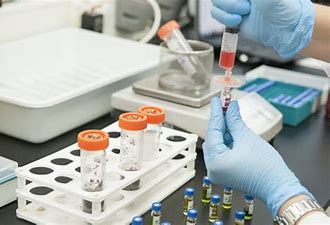This has been taken from the website called Not Milk. I have broken the letter up as it’s quite long and very rich in terms of what we need to know. Small doses may help in terms of taking it in. Thus I’m going to produce a series of blog posts based on this letter. Watch this space 🙂
Who is right? Why the confusion? Where best to get our answers? Can we trust milk industry spokesmen? Can you trust any industry spokesmen? Are nutritionists up to date or are they simply repeating what their professors learned years ago? What about the new voices urging caution?
I believe that there are three reliable sources of information. The first, and probably the best, is a study of nature. The second is to study the history of our own species. Finally we need to look at the world’s scientific literature on the subject of milk.
Let’s look at the scientific literature first. From 1988 to 1993 there were over 2,700 articles dealing with milk recorded in the ‘Medicine’ archives. Fifteen hundred of theses had milk as the main focus of the article. There is no lack of scientific information on this subject. I reviewed over 500 of the 1,500 articles, discarding articles that dealt exclusively with animals, esoteric research and inconclusive studies.
How would I summarize the articles? They were only slightly less than horrifying. First of all, none of the authors spoke of cow’s milk as an excellent food, free of side effects and the ‘perfect food’ as we have been led to believe by the industry. The main focus of the published reports seems to be on intestinal colic, intestinal irritation, intestinal bleeding, anaemia, allergic reactions in infants and children as well as infections such as salmonella. More ominous is the fear of viral infection with bovine leukaemia virus or an AIDS-like virus as well as concern for childhood diabetes. Contamination of milk by blood and white (pus) cells as well as a variety of chemicals and insecticides was also discussed. Among children the problems were allergy, ear and tonsillar infections, bedwetting, asthma, intestinal bleeding, colic and childhood diabetes. In adults the problems seemed cantered more around heart disease and arthritis, allergy, sinusitis, and the more serious questions of leukaemia, lymphoma and cancer.
I think that an answer can also be found in a consideration of what occurs in nature & what happens with free living mammals and what happens with human groups living in close to a natural state as ‘hunter-gatherers’.
Our Palaeolithic ancestors are another crucial and interesting group to study. Here we are limited to speculation and indirect evidences, but the bony remains available for our study are remarkable. There is no doubt whatever that these skeletal remains reflect great strength, muscularity (the size of the muscular insertions show this), and total absence of advanced osteoporosis. And if you feel that these people are not important for us to study, consider that today our genes are programming our bodies in almost exactly the same way as our ancestors of 50,000 to 100,000 years ago.
Read more about this in future blog posts. They wont have huge gaps between them so it wont be long. If you don’t want to keep checking this website, sign up here and receive notifications about new posts.



3 Comments
Heena Modi · September 18, 2008 at 5:21 pm
The Ethical Consumer (http://www.ethicalconsumer.org/FreeBuyersGuides/fooddrink/yoghurtdairysoya.aspx) reports that: –
Health issues
Dairy products have been linked to osteoporosis, heart disease, cancer, diabetes and a range of allergy related problem.
Despite the dairy industry’s claims that milk is an essential source of calcium, a diet high in dairy products may leach the body of more calcium than it provides.
Alternative calcium sources include green leafy vegetables such as broccoli and nuts and seeds such as brazil nuts and sesame seeds.
So is it good for us?
Heena Modi · September 18, 2008 at 5:44 pm
So if conventional milk isn’t good for us should we go organic? Is it a better option?
Here’s what the Ethical Consumer says about organic alternatives: –
http://www.ethicalconsumer.org/FreeBuyersGuides/fooddrink/yoghurtdairysoya.aspx)
Soil Association certified products are better for the environment and for the consumer in terms of avoiding much of the antibiotics, hormones and GM feed used in conventional milk production. But do they offer a better deal for the cows?
There are no guidelines for the length of time organic dairy cows may be housed indoors, but completely indoor systems are prohibited. Highly invasive practices such as embryo transfer are forbidden but artificial insemination is allowed. Fertility hormones are prohibited for synchronising calving but not for bringing an infertile cow into heat. Calves must be group housed after seven days old. Castration with a rubber ring is allowed within the first week of life. Disbudding (permanently preventing horn growth by applying a hot iron to the horn-forming tissue) is allowed up to 3 months. Calves can’t be taken to market under one month old, but after this, eight hour journeys are allowed. Organic cows are still impregnated each year to provide a continuous supply of milk and separated from their calves within 24-72 hours of birth. The scheme also allows unwanted calves to be killed soon after birth (1).
References
1 The Dark Side of Dairy, a Viva! Report by Toni Vernelli BSc Animal Biology and Conservation, 2005
2 Wrecking The Planet, Joni Seager, The State of The Environment Atlas, Penguin Books, 1995
3 Physicians Committee for Responsible Medicine http://www.pcrm.org, viewed on 21/10/05
4 http://www.food.gov.uk, viewed on 4/11/05
5 http://www.viva.org.uk, viewed on 4/11/05
6 http://www.purifymind.com/Hippo, viewed on 4/11/05
7 Corporate Watch newsletter: issue 24, June/July 05
8 Breaking the Rules, International Baby Food Action Network, 2004
9 http://www.itfglobal.org, viewed on 8/11/05 10 Earth Island Journal: Winter 2002/Vol17
11 Responsible Shopper website: Dean Foods viewed on 02/02/05
12 Ethical Consumer: 85 October/November 2003
13 Who Owns Whom: 2003/2004
14 The Ecologist: May 2003
15 The Ecologist: December 2004
16 Companies that test on animals, PETA, July 2004
17Breaking the Rules: 2004
18 Corporate Watch newsletter: issue 22, Feb/March 2005
19 BUAV Factsheet E3 Cosmetics Companies Guide, November 2004
20 Power Hungry – six reasons to regulate global food corporations: ActionAid report 2005
21 Ecolinks Boycott list – http://www.ecolinks.net, viewed on 25/02/03
22 http://www.oilpackers.com, viewed on 8/11/05
23 http://www.scconline.org, viewed on 11/10/05
24 Yeo Valley Group Corporate Communications: �Minimising Our Impact on the Environment’ 2005 < br>25 http://www.notmilk.com, viewed on 9/11/05
26 http://milk.elehost.com, viewed on 9/11/05
Is it really a better deal?
Anon · October 16, 2008 at 3:49 pm
The hardest part is convincing family members that milk really is poison.
It helps to demonstrate a before and after.
Child miserable before the milk elimination becomes happy child after, with occasional miserable episodes when milk slips in by accident.
It helped us a lot that, after a couple of years of almost no growth, our child gained several inches in height following the milk elimination.
His personality also changed, becoming much calmer and more focused. (Nothing like the elimination of pain to permit
calm!)
Comments are closed.